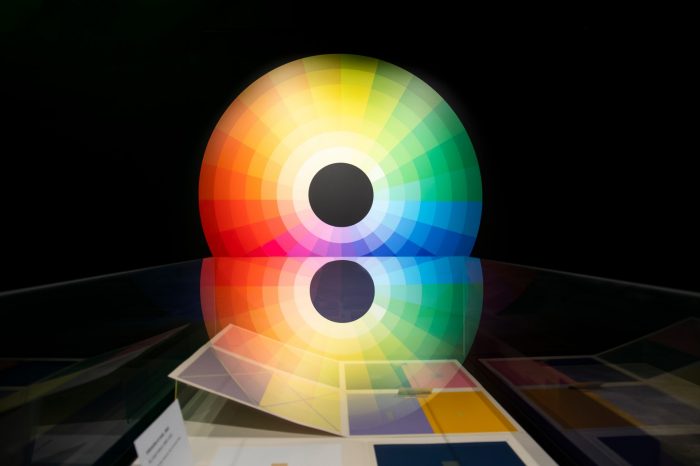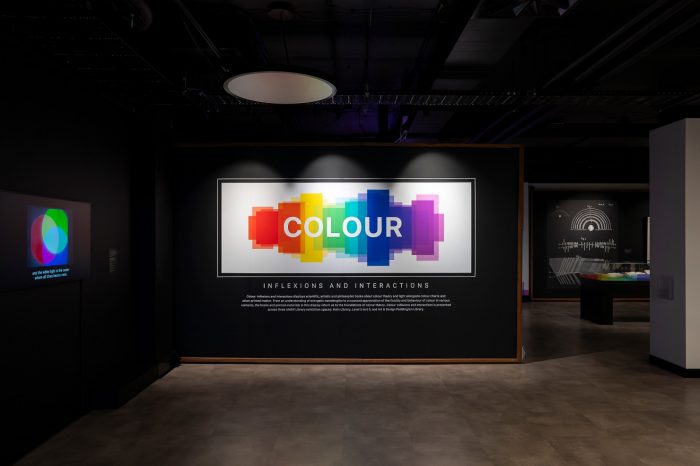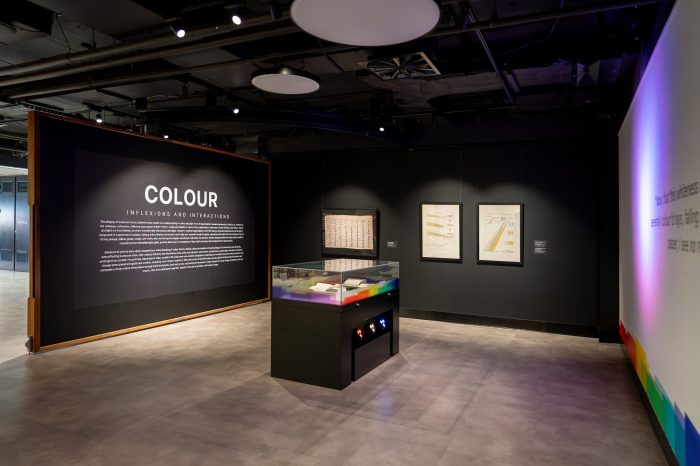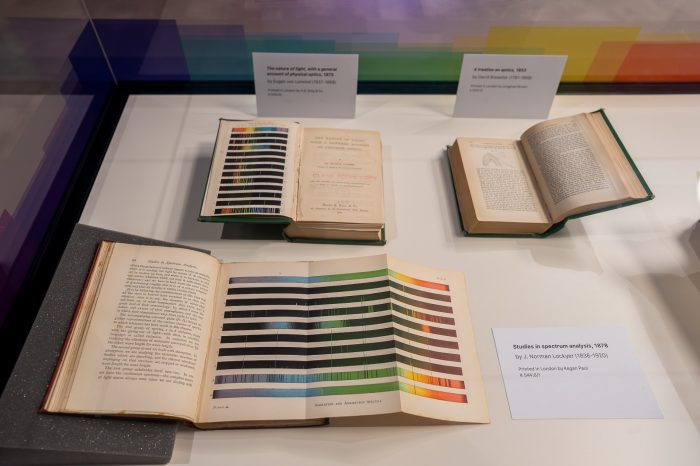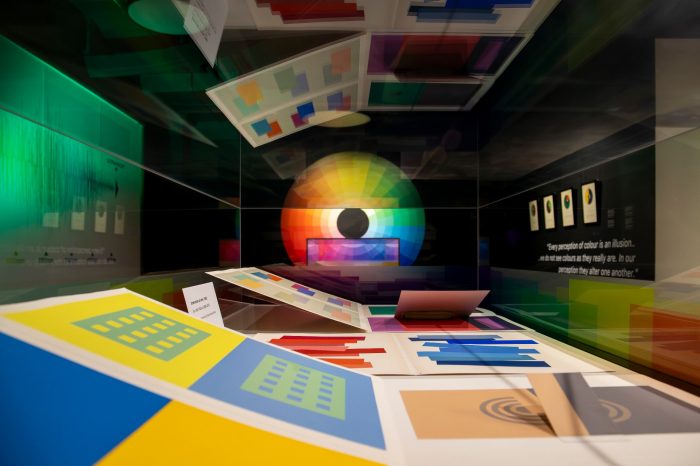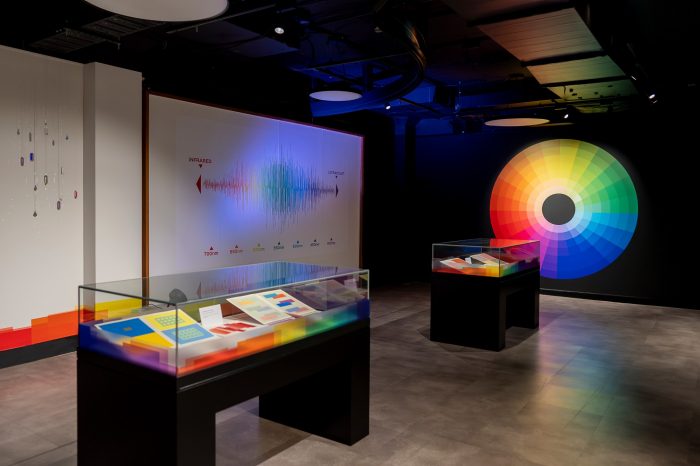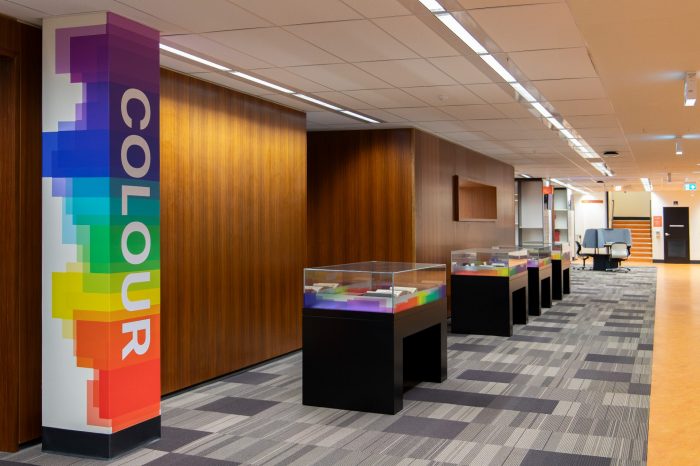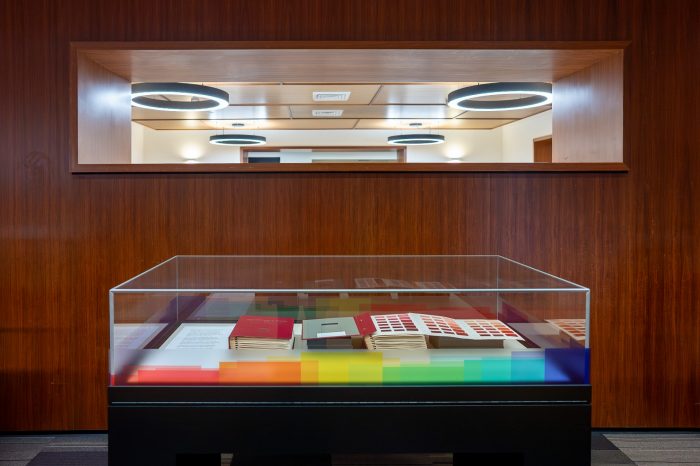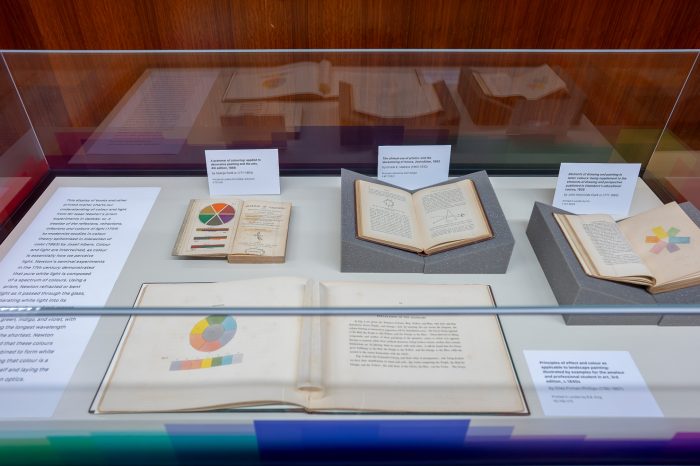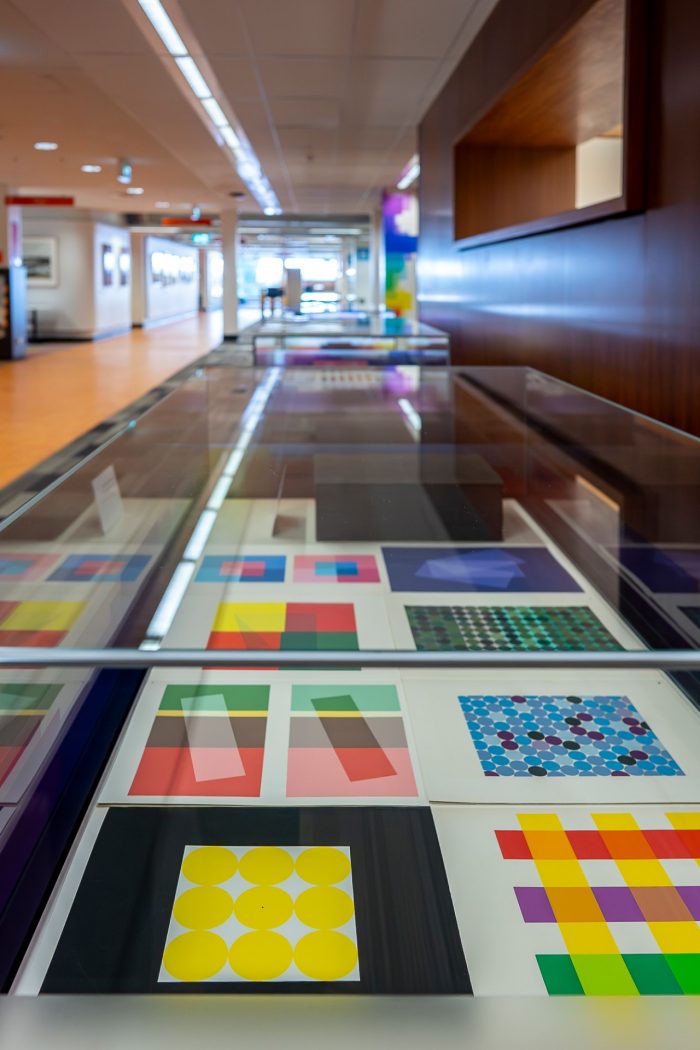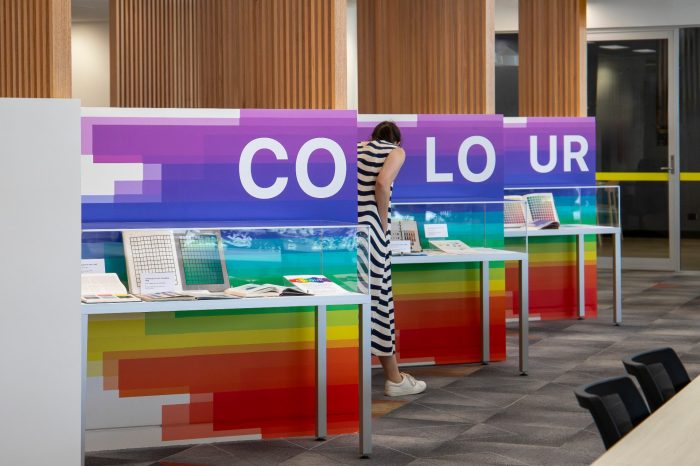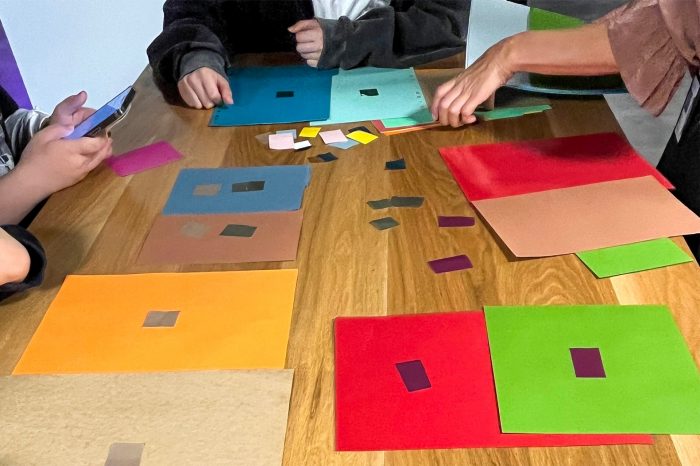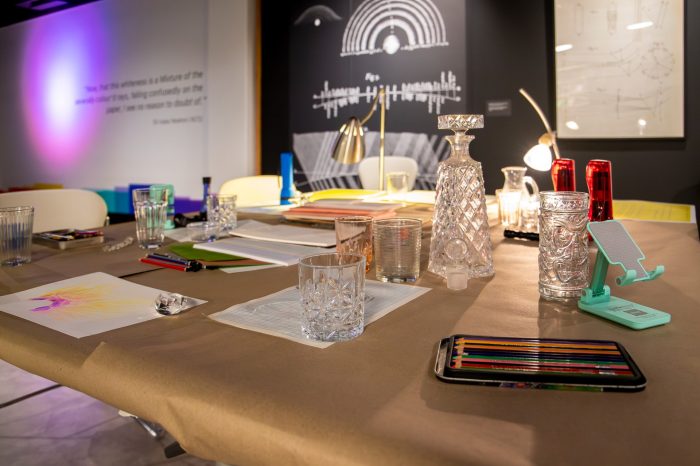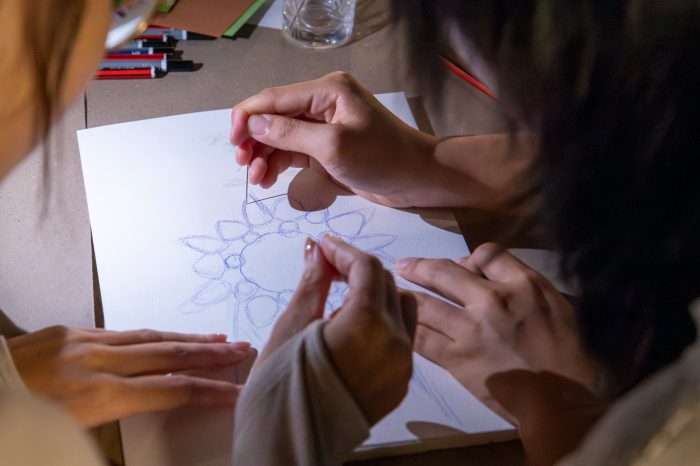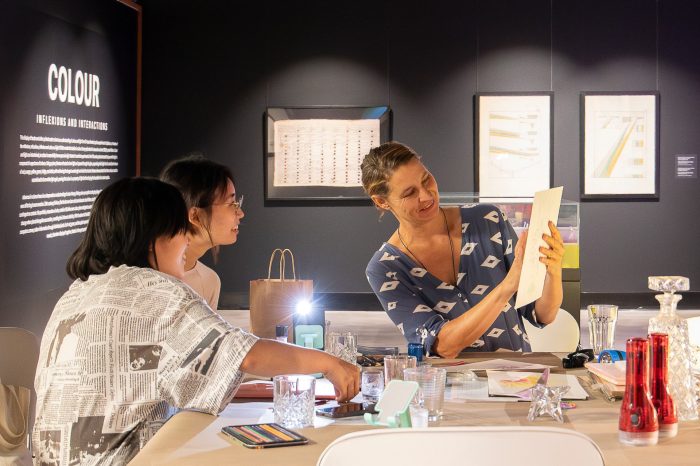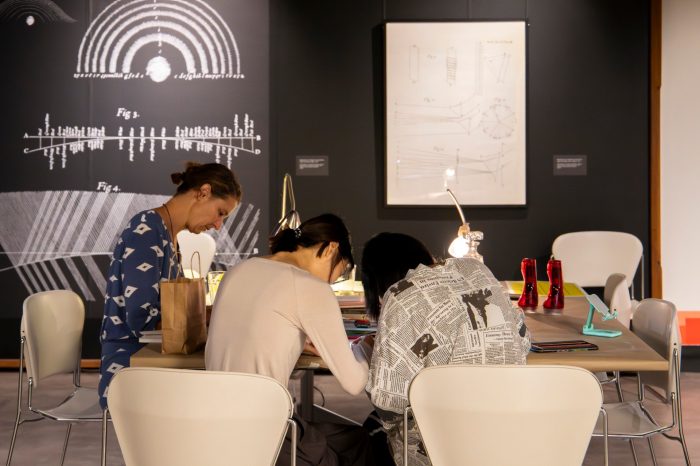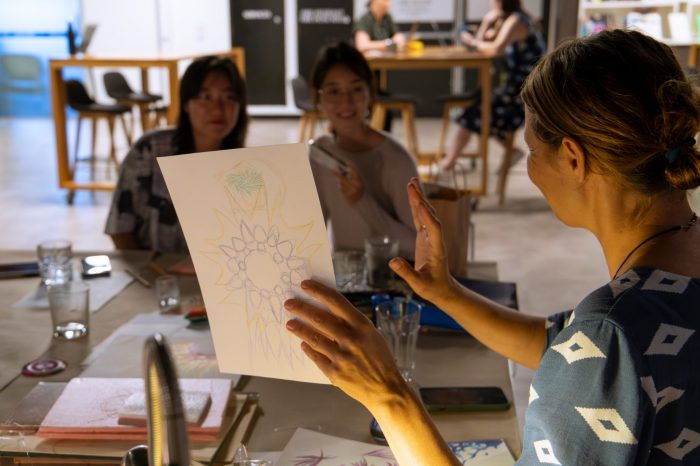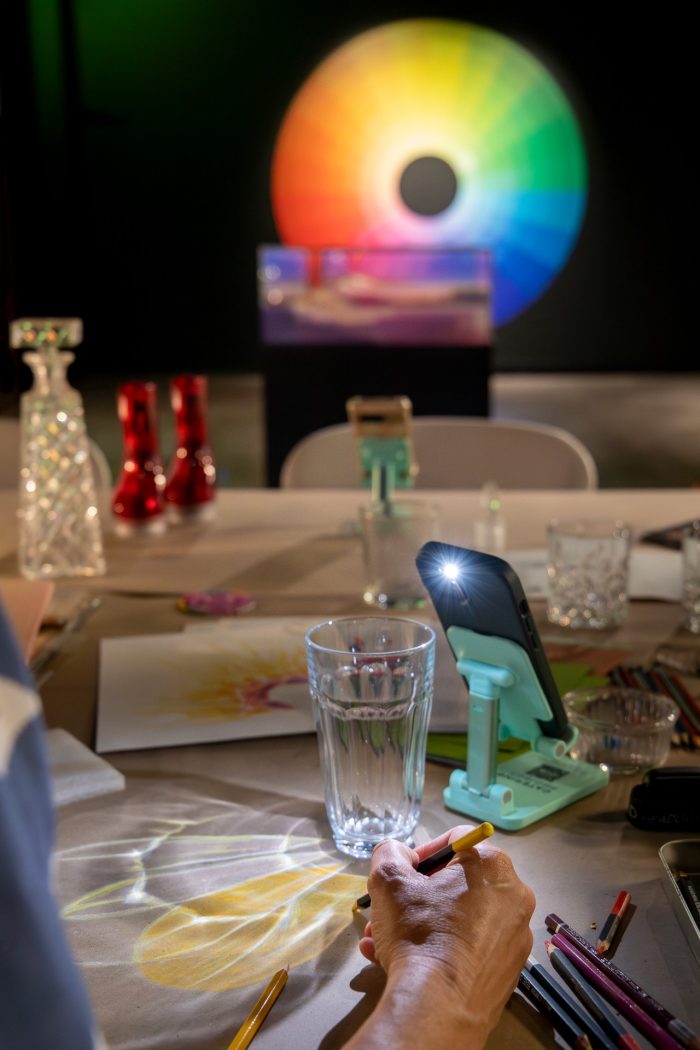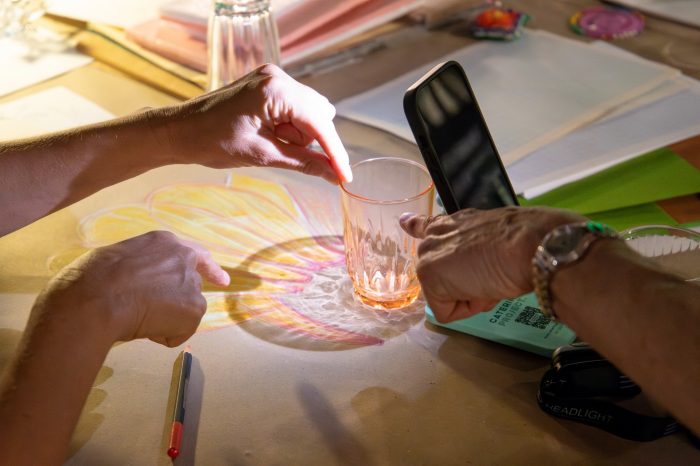Colour: Inflexions and Interactions
Colour: Inflexions and Interactions displays scientific, artistic and philosophic books about colour theory and light alongside colour charts and other printed matter.
When:
16 December 2024 - 9 March 2025
Where:
Level 3 Main Library
Level 5 Main Library
Art & Design Paddington Library
This display of books and other printed matter charts our understanding of colour and light from Sir Isaac Newton’s prism experiments in Opticks: or, A treatise of the reflexions, refractions, inflexions and colours of light (1704) to modernist studies in colour theory epitomised in Interaction of color (1963) by Josef Albers. Colour and light are intertwined, as colour is essentially how we perceive light. Newton’s seminal experiments in the 17th century demonstrated that pure white light is composed of a spectrum of colours. Using a prism, Newton refracted or bent light as it passed through the glass, separating white light into its constituent colours of red, orange, yellow, green, indigo, and violet, with red having the longest wavelength and violet the shortest. Newton demonstrated that these colours could be recombined to form white light again, proving that colour is a property of light itself and laying the foundation for modern optics.
Advances in science have since deepened our understanding of colour theory, linking colour perception to the physiology of the human eye and the brain, even affecting human emotion. 20th-century thinkers, like the German-born artist and educator Josef Albers, studied how our perception of colour is fluid and contingent on context. His portfolio, Interaction of color, contains 150 silkscreen colour plates designed as a teaching aid to demonstrate how colours interact and change when placed alongside one another, revealing their inherent relativity. With the advent of the RGB colour system, digital interfaces like televisions and computers convey colour information through individual pixels. Each red, green, and blue pixel represents a single sample of a larger image, acting like a tile in a mosaic, that when displayed together, blends in the eye to produce a full-colour image.
From an understanding of energetic wavelengths to a nuanced appreciation of the fluidity and behaviour of colour in various contexts, the books and printed materials in this display return us to the foundations of colour theory. Colour: Inflexions and Interactions is presented across three UNSW Library exhibition spaces: Main Library, Level 3 and 5, and Art & Design Paddington Library.
Top image: Detail of colour lithograph by Norman Lockyer, Plate II ‘Radiation and Absorption Spectra’ (1878) in Studies in spectrum analysis (1878) by J. Norman Lockyer. Printed in London by Kegan Paul. K 544.6/1.
Accessibility: UNSW Main Library and UNSW Art & Design Paddington Library are wheelchair accessible and the exhibition includes large-text artwork labels.
Exhibition image gallery
Public programs image gallery
Past events from this exhibition
Beyond the Glass: Experiencing the Library's Special Collections and Exhibitions
Learn about the Library’s Exhibitions Program and Special Collections and respond to works in the current display Colour: Inflexions and Interactions.
Come as you are and enjoy learning and engaging with colour and ideas. This event is an opportunity to encounter the current Library display and to enjoy conversation and hands-on creative activities.
Event was held on Tuesday 18 February 2025.
Open Studio: Colour: Inflexions and Interactions
Free drop-in artmaking activity responding to Colour: Inflexions and Interactions.
Visit the temporary light studio in the Exhibition Space where you can play with light, reflection, and refraction capturing your curiosities on paper.
Inspired by Sir Issac Newton's prism experiments and Josef Albers' colour theory.
Event was held on Wednesday 5 March 2025.

